Do you have a beloved leather item that has become cracked, faded, and discolored due to prolonged exposure to the sun? Has your most prized leather jacket or sofa been severely damaged by the harsh UV rays of our star, diminishing its beauty and comfort over time? If so, there is hope yet – with the right knowledge and techniques, it is possible to repair sun-damaged leather.
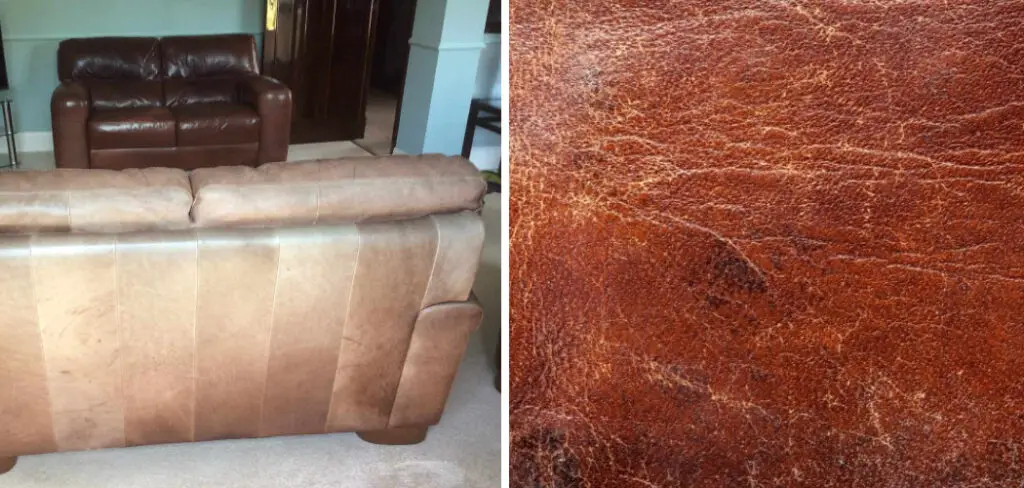
Sun damaged leather is a common problem caused by various factors such as direct sunlight, heat, humidity, and improper care.
In this blog post, we will explore not only how to repair sun damaged leather but also what restoration steps are needed to bring back its former glory! Prepare for some intense before-and-after pictures as we tackle this tricky task of reviving vintage pieces.
What Will You Need?
Before diving into the repair process, gathering all the necessary materials and tools is important. Here are some items you will need for this project:
- Leather cleaner
- Leather conditioner
- Microfiber cloths/sponges
- Distilled water
- Fine-grit sandpaper or leather eraser
- Leather dye (matching color)
- Foam brush
- Leather finish/sealant
It’s important to note that the type of leather and the extent of damage will determine the specific materials needed for your repair project. Now, let’s get started!
8 Easy Steps on How to Repair Sun Damaged Leather
Step 1. Clean the Leather:
Start off by thoroughly cleaning the sun damaged leather using a quality leather cleaner and a microfiber cloth or sponge. Apply the cleaner over the whole surface, paying extra attention to any particularly damaged areas. This removes dirt, grime, and any old conditioner, providing a clean surface for the repair. Allowing the leather to dry completely is crucial before proceeding to the next step.
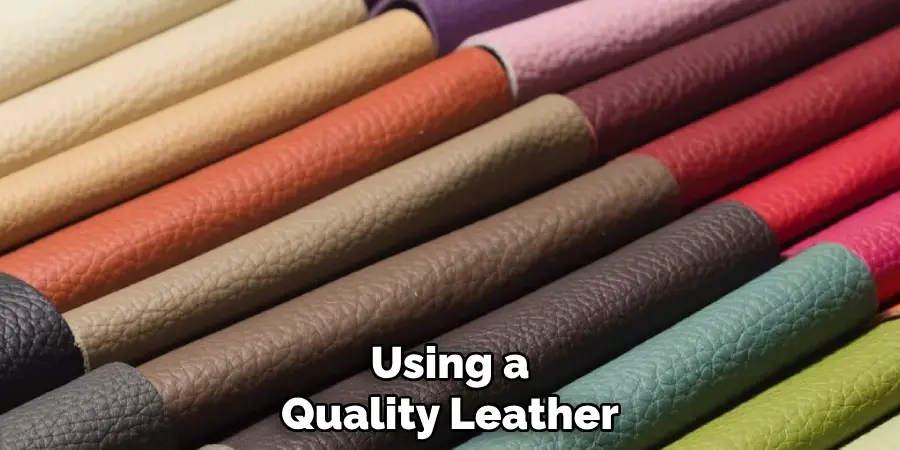
Step 2. Sand the Damaged Area:
After ensuring the leather is completely dry, lightly sand the sun-damaged areas using fine-grit sandpaper or a leather eraser. This step helps remove the damaged leather’s top layer, making it easier for the dye to penetrate. Be gentle to prevent causing more harm to the leather. Wipe away any residue with a clean, dry microfiber cloth before moving on to the next step.
Step 3. Apply Leather Conditioner:
Once you’ve sanded the sun-damaged area, apply a leather conditioner to the entire surface of the item. The conditioner nourishes the leather, making it more flexible and less likely to crack further. Allow the conditioner to soak into the leather for about 20-30 minutes, and then wipe off any excess with a clean cloth. Let the leather dry completely before moving to the next step.
Step 4. Apply Leather Dye:
After preparing the leather, it’s time to apply the leather dye. Ensure the dye color matches the original color of your leather item. Using a foam brush, apply the dye to the sun-damaged areas. Start with a small amount, adding more until the color matches the surrounding leather.
It’s better to apply multiple light coats rather than one heavy one for a more even finish. Allow the dye to dry completely before moving on to the next step. Take note that drying times can vary depending on the type and color of the dye, so follow the manufacturer’s instructions.
Step 5. Apply Leather Finish:
After thoroughly drying the dye, the final step is to apply a leather finish or sealant. This will help protect the newly dyed leather, sealing in the color and providing protection against further sun damage. Use a clean foam brush to apply the finish, ensuring to covers the entire surface evenly. Let it dry completely according to the manufacturer’s instructions.
With this step completed, your sun-damaged leather item should now look rejuvenated and ready for use once again. Remember, preventative care is always the best way to maintain the longevity of your leather items, so consider using a UV-protective spray in the future to guard against sun damage.
Step 6. Regular Maintenance:
Now that you’ve successfully repaired your sun-damaged leather, it’s important to maintain its condition through regular care. This includes cleaning and conditioning the leather every few months or more often if the item is used frequently.
Regular maintenance will help prevent future sun damage and extend the life of your leather item. Remember to keep your leather out of direct sunlight as much as possible, and consider investing in a UV-protective spray for additional protection. With the right care, your beloved leather piece can continue serving you well for many years.
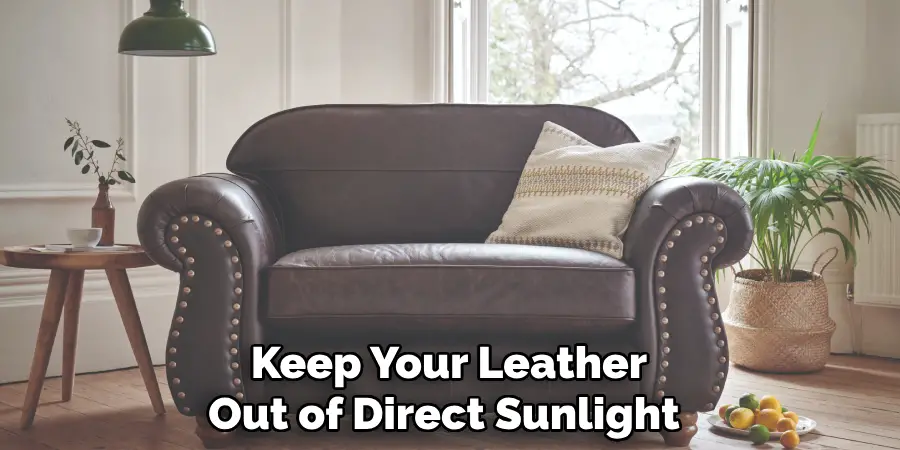
Step 7. Apply UV-Protective Spray:
In addition to regular cleaning and conditioning, UV-protective spray is crucial in preventing sun damage to your leather items. Apply the UV-protective spray all over the surface of the leather item, following the manufacturer’s instructions for application and safety measures.
This protective layer will help guard your leather against harmful UV rays and prolong its life and beauty. Remember to reapply the spray as the manufacturer directs to maintain its effectiveness.
Step 8. Store Properly:
Proper storage is fundamental in maintaining the condition of your leather items and preventing further sun damage. Avoid storing your leather in areas with direct sunlight or high humidity. Instead, opt for a cool, dry place.
If you’re storing leather clothing, use padded hangers to maintain the shape of the garments, and consider covering them with breathable cloth covers to protect against dust and other potential damage. For leather furniture, try to position it away from windows or other sources of direct sunlight. Proper storage can significantly slow the wear and tear process and keep your leather items looking their best.
By following these easy steps, you can effectively repair sun damaged leather and keep your beloved items in excellent condition. With proper care, your leather pieces will continue to serve you well and bring joy for years.
5 Additional Tips and Tricks
- Avoid Direct Sunlight: One of the best ways to prevent sun damage is to keep your leather items away from direct sunlight as much as possible.
- Condition Regularly: Leather conditioner not only moisturizes leather, preventing cracking and fading, but it also provides a certain level of UV protection.
- Use a Leather Sunscreen: There are products designed to protect leather from UV rays. These can be applied regularly for added protection.
- Cover Up: If your leather items cannot be moved out of the sunlight, use throws or blankets to cover them up, providing a barrier against harmful UV radiation.
- Professional Help: If the sun damage is extensive, it may be wise to seek the help of a professional. They have the tools and knowledge to restore your sun damaged leather to its former glory.
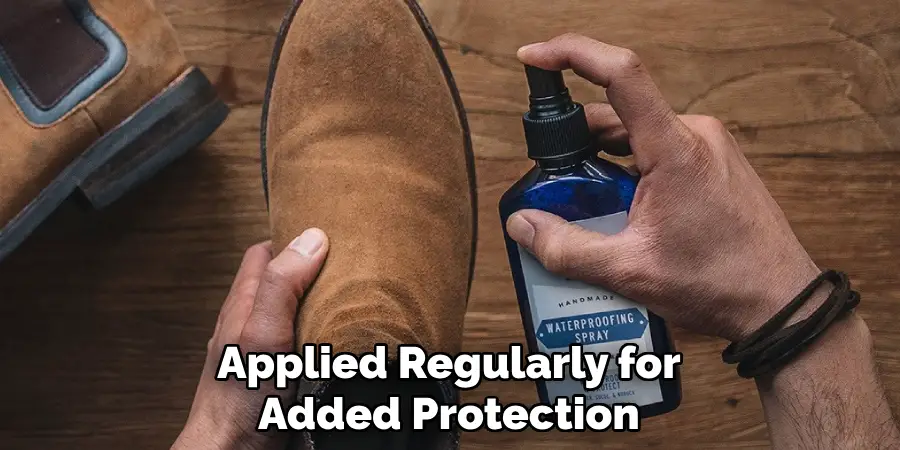
With these additional tips and tricks, you can ensure that your leather items remain in top condition, even when faced with the damaging effects of the sun.
5 Things You Should Avoid
- Avoiding Regular Maintenance: It is essential to maintain your leather items regularly. Refrain from cleaning and conditioning them to leave the leather vulnerable to sun damage.
- Ignoring Early Signs of Damage: Sun damage to leather can sometimes be catastrophic. It usually starts with a slight fading of color. Ignoring these early signs can lead to more extensive damage.
- Using Non-Specific Cleaning Products: Not all cleaning products are suitable for leather. Harsh chemicals can strip the leather of its natural oils, exacerbating sun damage.
- Exposing to High Heat: While the sun’s UV rays can damage leather, heat can also cause harm. Avoid placing leather items near heat sources such as radiators or heaters.
- Frequent Sun Exposure: Even with protection, prolonged exposure to the sun will cause damage over time. Limit the amount of time your leather items spend in direct sunlight.
By avoiding these common mistakes, you can prevent and reduce the effects of sun damage on your leather items. Remember to take proper care of your leather, which will continue to look beautiful for years.
Does Vaseline Soften Leather?
Vaseline is often used as a quick fix for dry leather, but does it actually soften leather? The answer is yes and no. While Vaseline can provide temporary moisture to dry leather, it does not have any long-term softening effects. In fact, using Vaseline on leather can clog the pores of the leather and cause further damage in the long run. For best results, use a high-quality leather conditioner specifically designed for softening and moisturizing.
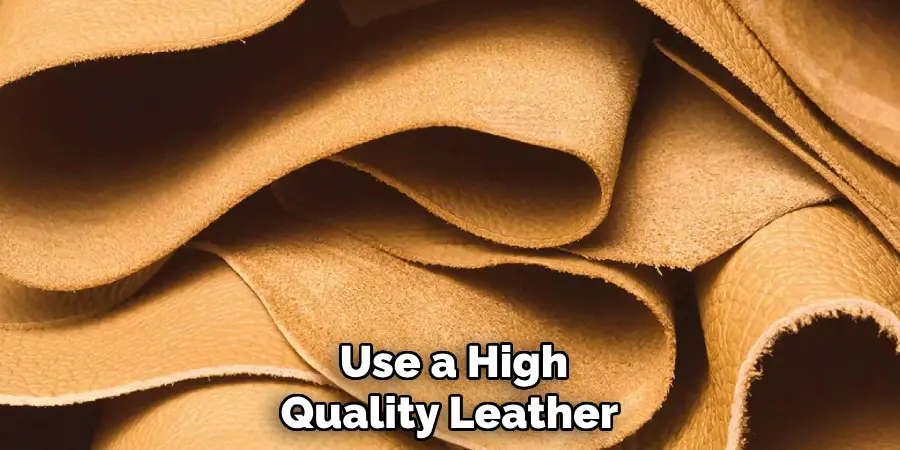
Best of luck in your leather repair journey! Remember to prioritize preventative care and follow these tips for maintaining the health and beauty of your leather items.
Conclusion
In conclusion, how to repair sun damaged leather is a process that can take some time. However, with the right steps, important considerations, and tools, you can successfully restore your sun-damaged leather to its prime condition.
Moreover, you should continue to monitor and maintain your leather pieces so you don’t have to repeat these steps frequently. If you are still determining which methods or products to use, consult a professional with experience repairing leather items or look for an upholstery product designed for cleaning and protecting damaged leather.
These preventive measures will help you bring back your sun-damaged items and make them look new!
Don’t forget – taking care of your leather pieces now is the best way to ensure their longevity down the road! So why wait? Start repairing your beloved sun-damaged leather today!

